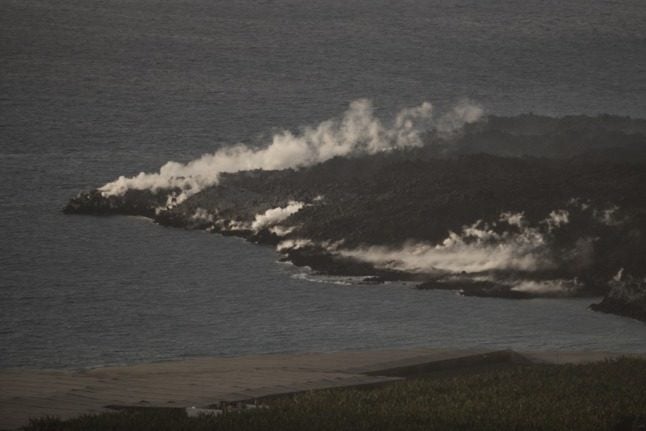So Roger, how did you end up living in La Palma?
I’d been going on holiday to the Canary Islands for 20 years before I moved there. I was a general director for Abbot Laboratories in Bern when I decided to take a sabbatical in 2005 and spend some time paragliding in La Palma. But the gap year turned into a complete life swap.
Had you ever paraglided before?
I started paragliding with my brother in Switzerland in 1986. I remember seeing two paragliders flying through the Swiss mountains and thinking, “Wow! I’ve got to give this a go!”
So I did a theory course, then a practical one and ended up getting a Swiss paragliding licence.
And now you’re making a living from it?
I’m a qualified tandem pilot and paragliding instructor for Palmaclub alongside my colleague Javier López.
Most of our clients have paragliding experience either in Spain or abroad. I offer them a meteorological briefing and extensive training for several months to help them pass their Spanish paragliding exams.
Paragliding in La Palma can be quite challenging because the largely volcanic terrain means you have to plan your landing carefully and the wind can easily change direction.
We have many German and Swiss clients, quite a few French and Italians but very few Spaniards, surprisingly.
Tell us a bit about life in La Palma.
It’s a special place — you either love it or you hate it. There are only 85,000 people on the island so you don’t have much anonymity. It can also be very quiet and the nightlife isn’t up to much. Even the beaches aren’t that great, and in the winter the sea can be very choppy.
Sounds like you want to put people off.
No, as I said, it’s not to everyone’s liking. If you enjoy hiking, you’ll think La Palma is amazing. There are countless places to explore and so much diversity between the volcanic terrain in the south and the dense laurisilva forests of the north.
How about Canarian cuisine?
I recommend cocido canario (Canarian stew) and chicken with mojo rojo sauce (made from olive oil, cumin, garlic and paprika).
What place is a must for people visiting La Palma?
The capital, Santa Cruz, is a tourist hotspot because of the old colonial buildings and Los Llanos is the biggest city and the best place for shopping.
But I would recommend El Tablado, a small village in the north of the island. You get an idea of what life in the Canary Islands was like 80 years ago. There’s only one bar, so I’d suggest having a cervecita (beer) and just talking to the locals.
What are the Palmeros like?
They’re a bit like the Swiss. It takes them a while to warm to strangers but once they get to you know, you have them as friends for life.
I have a mixture of expat and Palmero friends but I try to steer clear of German and Swiss communities living on the island.
Who would you recommend La Palma to?
Anyone who likes nature and living outdoors will fall in love with this island. There’s so much diversity within such a small space. I personally love how in the winter the weather changes are so extreme.



 Please whitelist us to continue reading.
Please whitelist us to continue reading.
Member comments